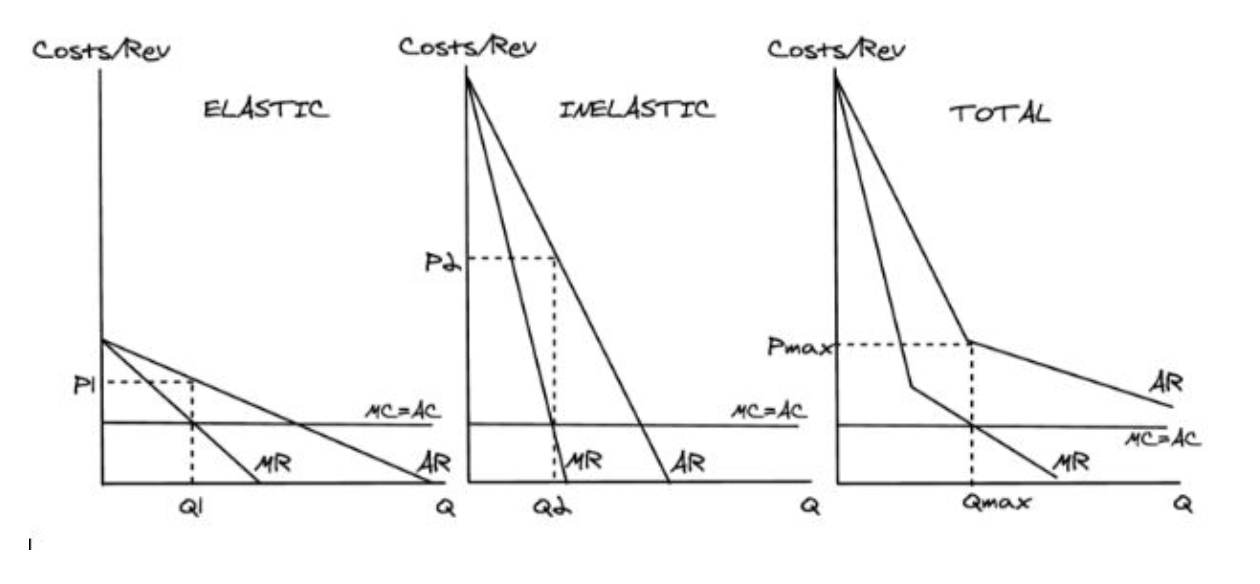Monopoly
1/38
There's no tags or description
Looks like no tags are added yet.
Name | Mastery | Learn | Test | Matching | Spaced |
|---|
No study sessions yet.
39 Terms
What is a monopoly?
where there is only one firm in the market.
What is a pure monopoly?
a firm with 100% market share
What is a legal monopoly?
a firm has over 25% of market share.
What are the assumptions of a monopoly to simplify them?
there’s only one firm in the market
it is a profit maximiser
high barriers to entry
What does a profit maximiser mean?
it produces where marginal cost= marginal revenue
What are the five barriers to entry?
legal barriers
sunk costs
economics of scale
brand loyalty
anti competitive practises
What is the purpose of legal barriers?
they allow firms to legally prevent other firms from stealing their ideas and entering their market.
What are examples of legal barriers?
patents, trademarks and copyright
What are sunk costs?
costs that cannot be recovered (e.g. advertising).
Why are sunk costs a barrier to entry?
High sunk costs are a barrier to entry: they deter new firms from entering because firms know that if they fail, they won’t be able to recover any of their sunk costs.
What do large firms use internal economies of scales for?
reduce LRAC
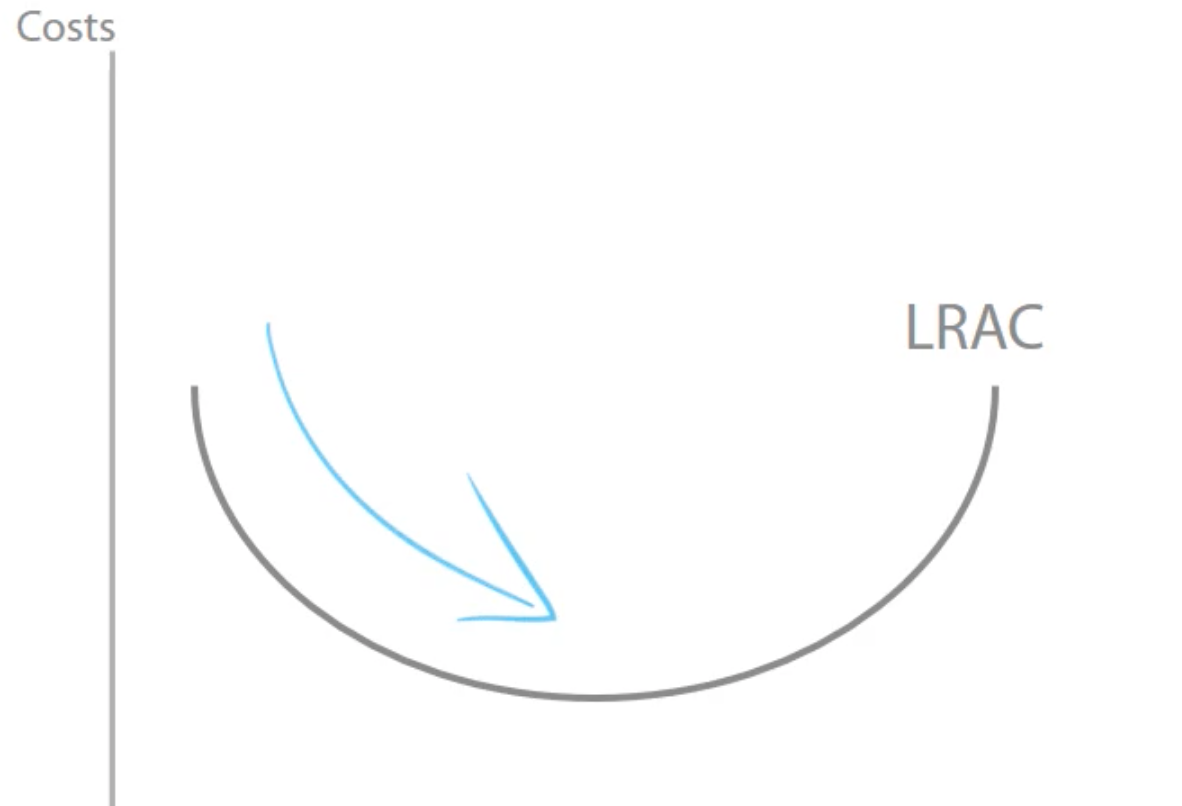
What are the types of internal economics of scale?
Risk-bearing, managerial, financial, purchasing, technical and marketing.
How is economies of scale a barrier of entry?
Economies of scale mean incumbent firms can keep their costs and prices low, creating a barrier to entry because smaller new firms without economies of scale can’t compete on price.
What is an incumbent firm?
A firm currently in the market.
Explain how vertical integration can be an anti-competitive practice:
Firms can vertically integrate to take control of scarce resources (like the power grid or the oil extraction firm); and then refuse to let new firms use these scarce resources, stopping them from entering the market.
What is brand loyalty?
strong branding from incumbent firms makes it hard for new entrants, with weaker branding, to make any sales.
What are anti competitive practises?
Anti-competitive (or restrictive) practices include anything a firm might do, to restrict competition.
E.g. vertical integration: firms can vertically integrate to take control of scarce resources (like the power grid); and then refuse to let new firms use these scarce resources, stopping them from entering the market.
What is the monopoly diagram?
costs and revenue diagram
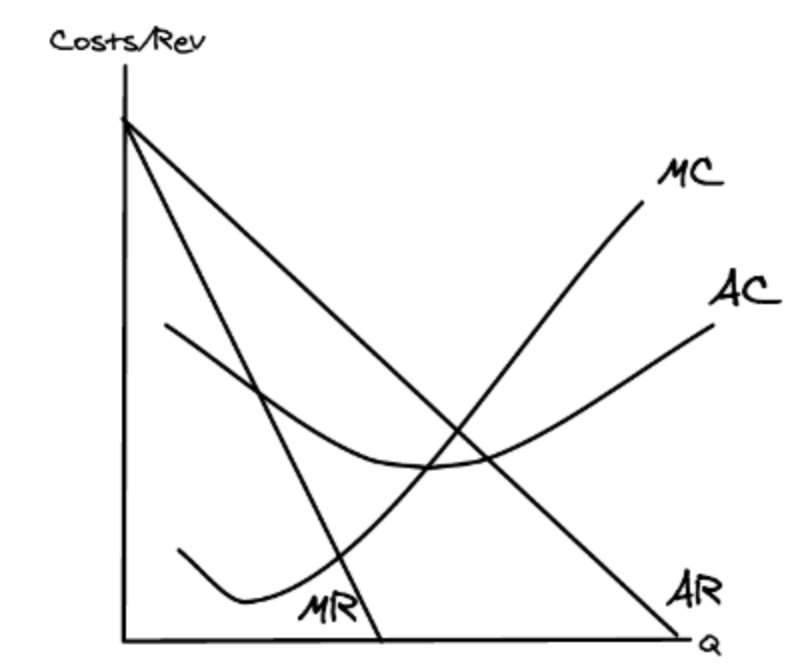
What are the four measures of efficiency?
productive
dynamic
allocative
x efficiency
How do you know the productive efficiency?
Average total cost is at its lowest, where MC=AC
How do we work out productive efficiency on the curve?
MC= AC
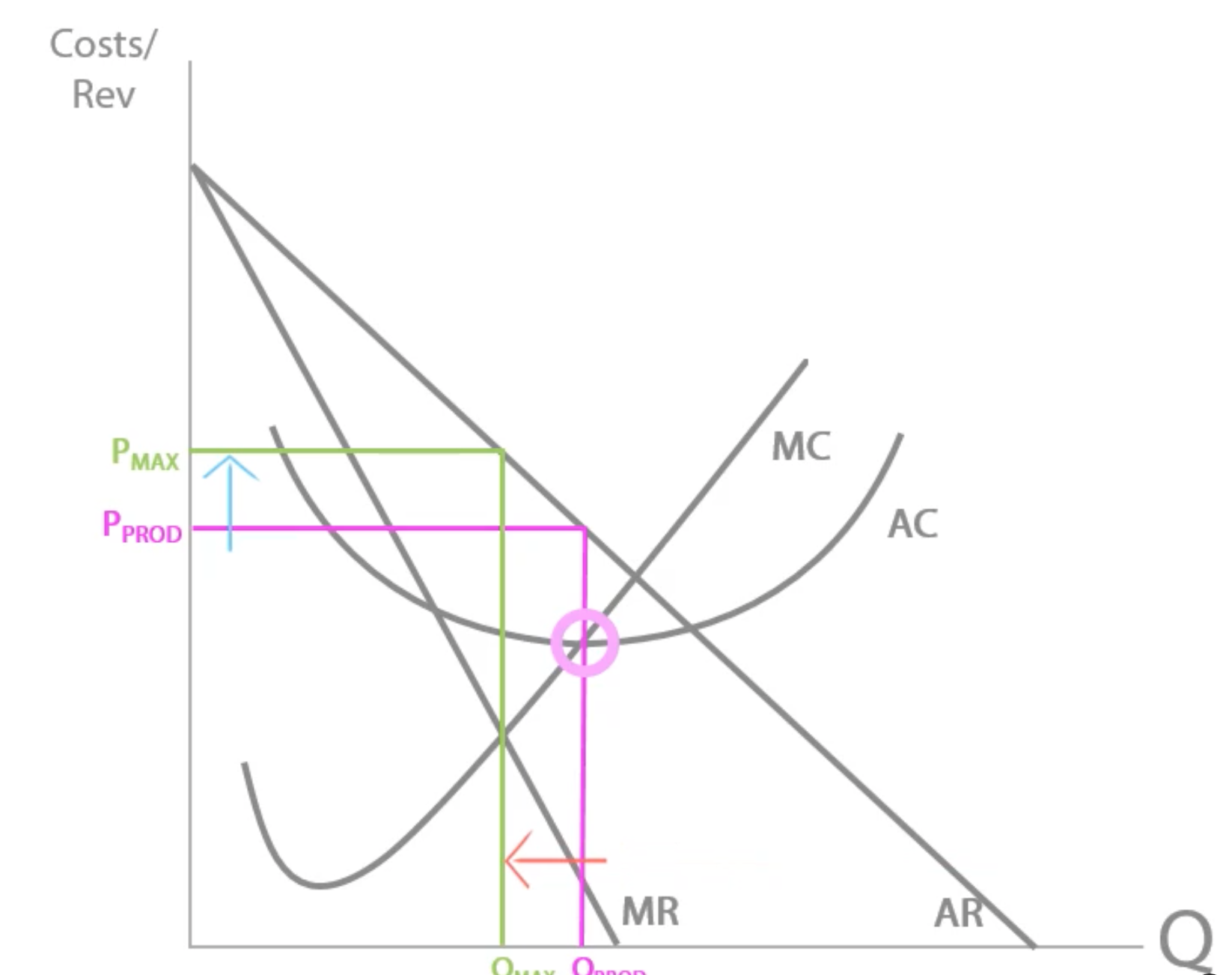
What is allocative efficiency?
Welfare is maximised, MC=AR
X-inefficiency is when:
a firm is producing above its average cost curve for a givenlevel of output.
Dynamic efficiency occurs when:
AR is greater then ATC
What is dynamic efficiency?
How changing technology improves output potential over time
Are monopolies normally efficient?
no
why does the government support and own monopolies, if we know monopolies are productively, allocatively and X-inefficient?
There are lots of arguments but one of the most important arguments behind why the government supports certain monopolies is the natural monopoly argument.
What is a natural monopoly?
A natural monopoly is when it’s naturally most efficient if only one firm is in the market.
E.g. with public transport, it would be very inefficient if London had multiple transport networks, it’s most efficient to have just one (like TFL) in control of everything...we’ll see exactly why next
Explain why TFL is considered a natural monopoly. (4 marks)
Natural monopolies exist for two reasons: firstly, high sunk costs; secondly,huge economies of scale.
TFL has high sunk costs like railways, Oyster card tech development and training staff - which have been estimated as high as £129bn. It would be inefficient if a second transport firm entered the market and duplicated this £129bn cost, so it’s most efficient to have just one firm, TFL, in the market.
TFL has huge economies of scale like purchasing economies, which it can use to buy fuel in bulk to power its trains and buses at very low long run average costs. To fully exploit these economies of scale and get to its MES, TFL needs to increase its sales massively - which it can only do if it’s the only seller in the market.
How is a natural economy shown on the diagram and why?
Internal economies of scale followed by internal diseconomies of scale

What does the natural monopoly diagram look like?

How are the profits of a natural monopoly shown on the diagram?

Reasons for natural monopolies: high sunk costs
Very high sunk costs mean it would be inefficient if a second firm entered the market and also had to incur those sunk costs - so one firm is most efficient.
E.g. TFL’ sunk costs have been estimated as high as £129bn - it would completely inefficient for a second firm to waste £129bn to enter the market, too.
Reasons for natural monopolies: huge economies of scale
Huge economies of scale means it’s most efficient for just one firm to be in the market so it can increases its output massively to reach its MES.
What is a diagram assuming MC is constant?
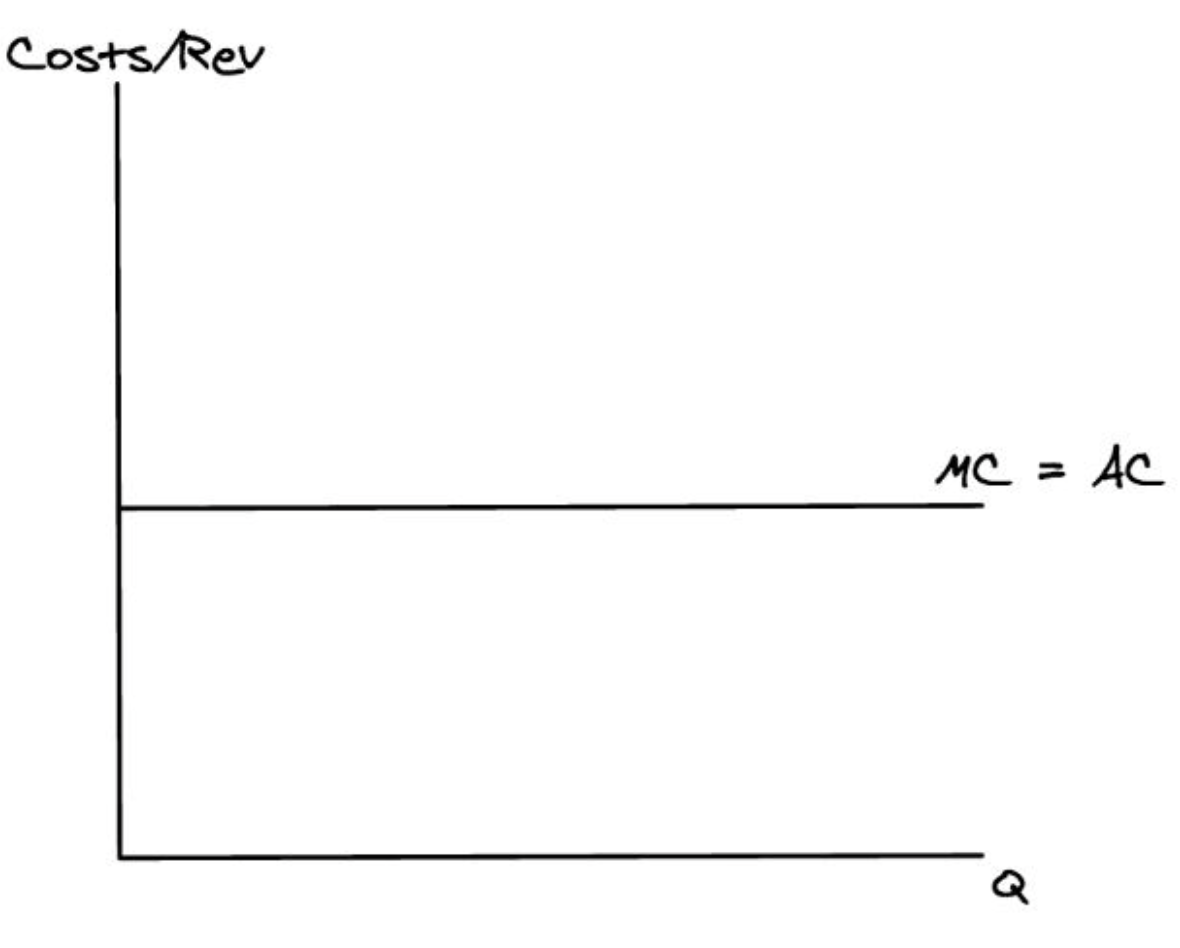
What is price discrimination?
when a firm charges different groups of consumer different prices, but for the same good.
e.g students get cheaper train tickets then adults
when price discriminating a firm will charge:
Elastic consumers a lower price and inelastic consumers a higher price
what are the 3 conditions required for price discrimination?
The firm must have market power: it must be able to change their prices
The firm must have information on consumers’ elasticities: it must be able to identify which consumers are elastic and which are inelastic
What The firm must be able to limit reselling: it must be able to limit elastic consumers from selling cheap tickets to inelastic consumers; like how trains require student IDs or student Oysters, to stop inelastic adult consumers using resold student tickets!
What is the price discrimination diagram?
